When we age, we start to realize that flexibility is a skill. It affects how we move everyday from doing simple tasks such as getting in and out of the car, tying your shoes, bending or reaching over to pick something up. Stretching promotes flexibility and helps your joints maintain a healthy range of motion. Here are my top 8 stretching tips for super inflexible people.
Overview
- Flexibility Begins in Your Mind
- Deep Breathing
- Learn About Your Body
- Focus On Your Stiffest Areas
- Stretch Consistently
- Set Small Targets to Measure Progress
- Don’t Be Afraid to Make Modifications
- Stretch While Watching TV
8 Stretching Tips for Super Inflexible People
These are the 8 stretching tips for inflexible people that I would tell myself if I could go back in time.
1) Flexibility Begins in Your Mind
How it works: Some people are naturally more flexible than others. Even the most inflexible person can become flexible if they are willing to put the work into it. Flexibility is a skill that you can work on and improve at any age, you just need to believe that you can do it first.
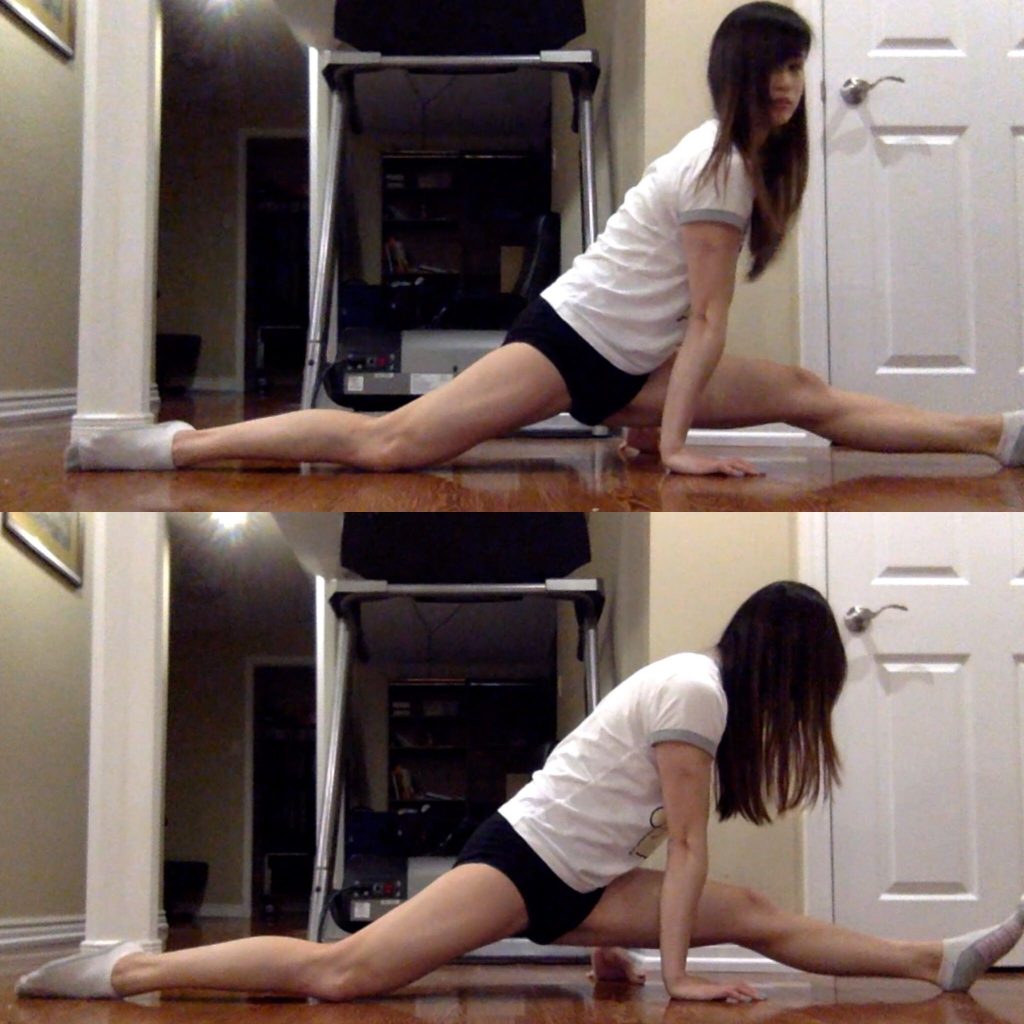
I believed my entire life that flexibility wasn’t something I could improve. Stretching was very painful and I convinced myself that if I stretched I would only be as flexible as an average person. That was until I decided to change my mindset – I thought, what if I can work on my flexibility and get better at it?
This mental shift allowed me to open up and learn new things. At the age of 24, I went from not being able to touch my toes to getting my splits in 5 months. I’ve written a detailed post about my front splits journey (with some before and after pictures). Flexibility begins with changing your mind first.
2) Deep Breathing
How it works: According to Delavier’s Stretching Anatomy, “breathing provides oxygen to your muscles and releases tension” (1). Knowing when to breathe allows you to optimize all of your stretches. Actively Inhale through your nose before stretching to oxygenate the muscles and exhale through your mouth to sink deeper into a stretch.

When training for flexibility, it’s important to learn how to breathe effectively. The first step is to be aware of your breath. Is it fast or slow? deep or shallow? Do you find yourself holding your breath? Are you breathing from your nose or belly? The second step would be to gradually train yourself to breathe effectively. This means taking deep, even, calm breaths through your belly.
Breathe slowly to find your natural rhythm. Any uneven breathing or jerkiness should be avoided to prevent your muscles from tensing up.
3) Learn About Your Body
How it works: Stretching requires you to connect your mind to your body. Practice awareness by being present as you stretch and transition between stretches. Take a moment to notice where you feel the stretch and this feeling changes from day-to-day.

When we stretch, our mind and body learns what feels good and what doesn’t. Some days our hips or neck could feel extra tight and we aren’t able to get as deep into a stretch as we’d like. This is part of the process and it’s okay. Acknowledge how your body feels on any given day and make the choice to continue.
I think of stretching as an interplay between what we tell our bodies to do and what the brain thinks we’re able to do. Built-in mechanisms in the brain (called the stretch reflex) protects us from danger even when there is none. As you learn about your body and which muscles are at work, you can then engage and strengthen these muscles to control.
4) Focus on Your Stiffest Areas
How it works: Naturally, some joints feel more stiff than others. Areas that are stiff overcompensate which prevent other muscles from being stretched properly. To make the most out of your routine, focus on stretching the stiffest areas for 10-20 minutes each day. Once these muscles loosen up, it will be easier to stretch neighbouring muscle groups.
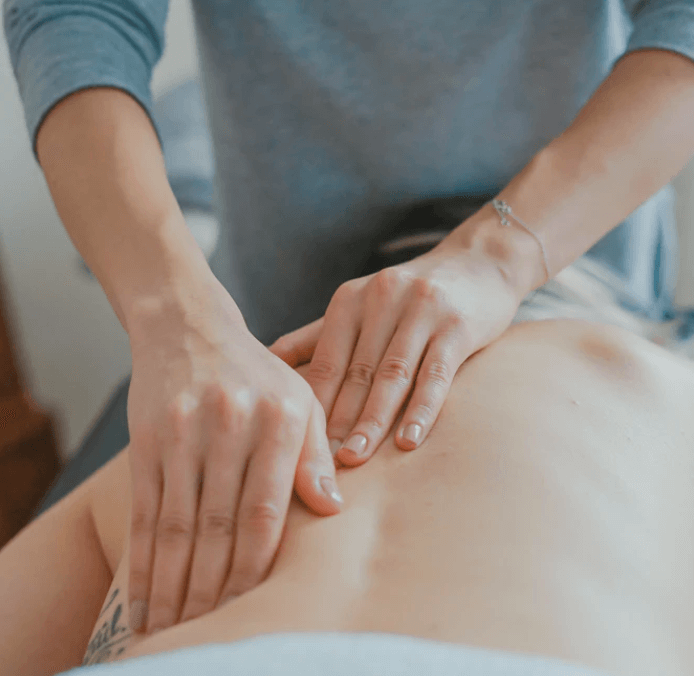
To identify your stiff areas, ask yourself if you feel tension in any particular muscle group when performing day-to-day tasks (sitting, standing, squats, bending over) or areas that you find are difficult to stretch. Common areas that store tension are the neck, upper back, lower back, hip flexors, and hamstrings. If your goal is to achieve a specific flexibility move, such as your downward facing dog, forward fold, or splits, you can focus on stretching related muscles. Choose 3-4 stretches that target your stiffest areas. Stretch those muscles everyday to increase your range of motion. Over time, you will notice improvements in surrounding muscles.
5) Stretch Consistently
How it works: To see the results of stretching, you need to do it consistently over time and commit to the process. David Nolan a physical therapist at the Massachusetts General Hospital says “it may have taken you many months to get tight muscles, so you’re not going to be perfectly flexible after one or two sessions…you’ll have to continue working on it to maintain it” (2).
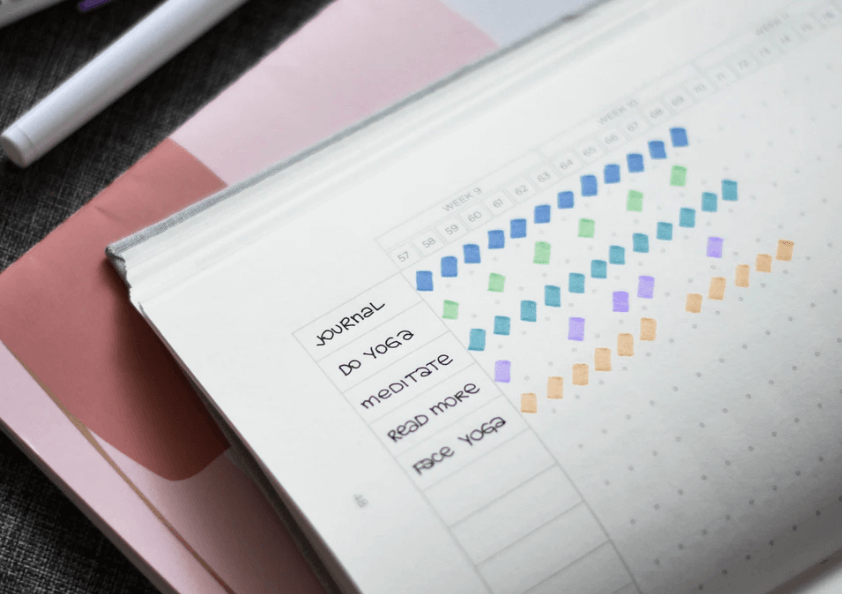
Stretching everyday helps to keep your joints flexible, strong and healthy. At the end of a stretching session, you may feel a temporary increase in your range of motion. If don’t continue stretching, your range of motion will revert back to your regular routine. Flexibility is the result of the hours you put into stretching each week.
If you are a beginner, start by stretching 3 times a week. Plan your schedule by marking down which days you will stretch, the exact time and place that you will do it. Essentially, you are removing all ambiguity by being as specific as possible. You can explore adding stretches to your morning routine, after a workout, while watching TV or make it part of your bedtime routine to help you sleep.
6) Set Small Targets to Measure Progress
How it works: Training for flexibility takes a lot of time and patience. It could take weeks or months to see any noticeable results. Pick smaller targets that you can work towards each day to help you measure your progress and keep your goals in check.

Taking progress videos at the end of each stretching session helped me 1) work towards an end action and 2) attempt the final stretched position. I felt a sense of accomplishment when I could set up my webcam and see that I was a little more flexible than I was at the start of the stretching session. Pick your target – for example, taking progress pictures after stretching or simply finding a spot on the ground that you can reach for. Whichever target you choose, take a moment to acknowledge your accomplishments as you continue with your daily practice. This will help you make little improvements each day.
7) Don’t Be Afraid to Make Modifications
How it works: Find a stretch variation where you feel mild discomfort. The idea is not to push to the point where you feel pain. Pushing too far, too quickly increases the risk of muscle strain which would hinder any progress you’ve made.

There are stretches for every level of flexibility, whether you’re a complete beginner, intermediate or advance. If you are inflexible, start with modified stretches using yoga blocks. Practicing with yoga blocks allows you to focus on correcting your form. Work on form first for best results and depth will improve naturally.
8) Stretch While Watching TV
How it works: Stretching while watching TV will distract you from any discomfort while holding a stretch. It also helps your muscles relax to prepare for better sleep and gives your body a break from prolonged periods of sitting.

If you tend to skip your stretches after the gym, you can try stretching in the evening when you’re watching your favourite show. I’ve gotten this tip numerous times from people who have practiced flexibility growing up.
Stretching is more doable when you can pair it with a fun activity that you may already be doing on your down time. I don’t watch shows regularly but I made the effort to put on a documentary or learn something new in the background while I’m stretching.

Takeaway
No matter how inflexible you think you are, anyone can improve their range of motion by following these 8 stretching tips for inflexible people. Flexibility has allowed me to explore and play with new ranges of movement. I got my splits for the first time as an adult and I am now more flexible than I’ve ever been in my life.
Let me know what your favourite tips are or any that you’ve tried in the comments!

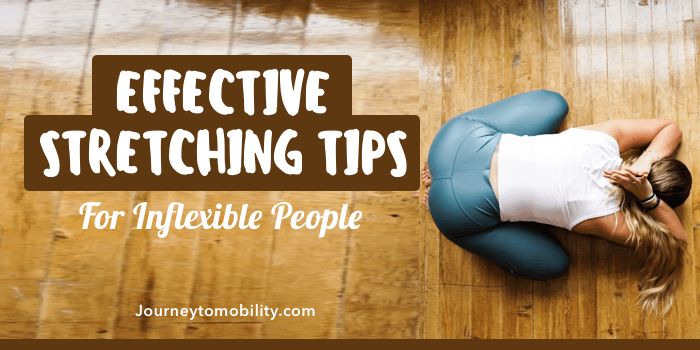

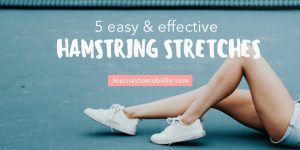
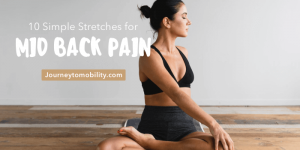
Really nice tips. I used to believe flexibility was something people were born with till I read this. You being able to split at 24 in 5months is really amazing.
Ill be using this for pole dance!
Great tips and great post. Thank you!
I so needed this right now, pinned for later!
These are some really good stretches for people like myself who are quite inflexible! I always try to improve my range of motion by watching what others do, but I think using these tips, it will help me move forward and improve!